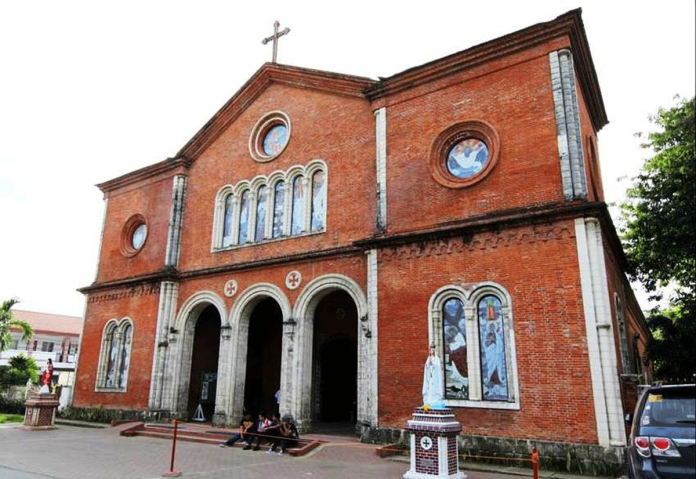
PAVIA Parish Church, popularly known as Santa Monica Parish Church, is a century-old church built by Spanish Augustinian Fathers led by Fray Policarpio Minayo. The parish was established sometime in 1862.
The church’s interior and exterior walls are made entirely of red bricks, making it the only existing brick-constructed church in the island of Panay.
This church is somewhat similar to the church of the town’s namesakes halfway around the world, Pavia in Italy – the ancient royal archbasilica of San Michele Maggiore – minus the front columns.
While the parish of Pavia – dedicated to Saint Monica – was established in 1862, it was only between 1887 and 1889 when construction of its brick church – as it now stands – began.
Saint Monica (c. 332 – 387 AD) was an early African Christian saint and the mother of St. Augustine of Hippo. She is honored in the Catholic and Orthodox Churches, albeit on different feast days, for her outstanding Christian virtues, particularly the suffering caused by her husband’s adultery, and her prayerful life dedicated to the reformation of her son, who wrote extensively of her pious acts and life with her in his Confessions. Popular Christian legends recall Saint Monica weeping every night for her son Augustine.

The Santa Monica Parish Church was envisioned in the Byzantine style, with Romanesque design elements. Two Greek crosses dominate the façade above the triple-arched main doorway, and the transept is round set against the rear wall.
The facade also features circular and arched stained-glass windows. The stained glasses depict significant events in Christ’s life on earth – the Annunciation, the Baptism of Christ, the Last Supper, Crucifixion, the Assumption of the Blessed Virgin Mary, and the Ascension of Christ.
Inside, one can appreciate the stained glass windows more; they give contrast to the red bricks.
The church’s plan – with a rectangular shaped-floor plan – was completed in Oct. 2, 1886 in Spain. It was said that the official launching of the construction was started on the feast day of Santa Monica, May 4, 1887.
The Spanish Curate, Reverend Father Antonio Fermintino, enlisted the labor force of the town and undertook supervision of the construction.
Fermentino served the parish twice as parish priest in 1884 and 1887.
The church weathered the elements through the years – rain, heat, earthquakes, floods.
It was used as a garrison by the Japanese during World War II. During the battle for liberation in March 1945, American tanks punched a hole through the edifice.
In 2003, its restoration (by phases) started – façade, the barreled-shaped apse, the sacristy, choir loft, stained glasses, floor elevation, wooden doors, iron grills, belfry, and altar, trusses (wood to steel).
In the churchyard is a small garden with the statue of Santa Monica./PN






